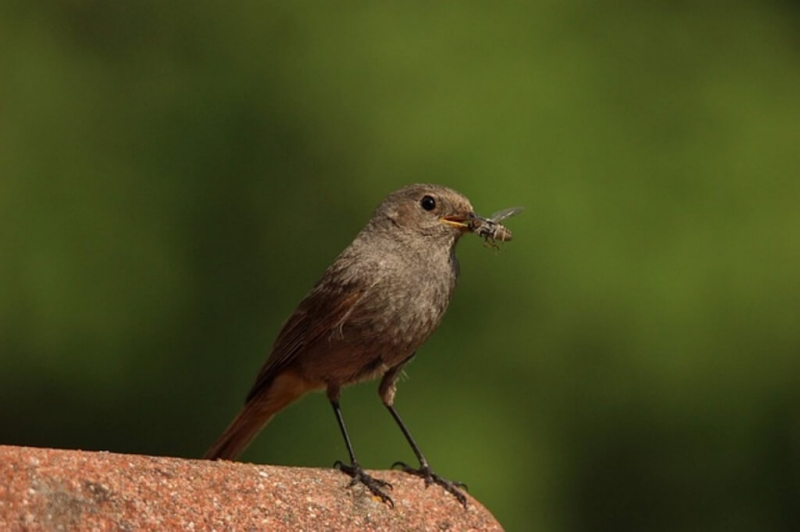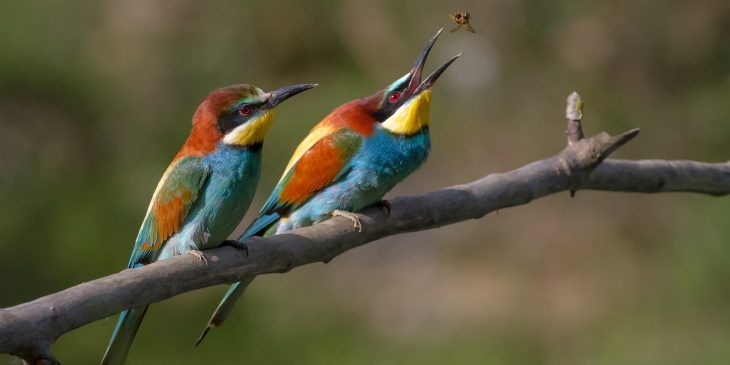Birds
Several birds prey on wasps, and they are typically seen pursuing lone wasps like the mud dauber. Instead of social wasps, birds usually target solitary wasps. Social wasps send out an alarm pheromone that causes the other wasps in the nest to attack when they sense danger. These wasp species are often less aggressive and rarely sting. Additionally, they lack aggression and, by default, let their predators consume them without any resistance.
Wasps are eaten by a variety of birds, including chipping sparrows, gray catbirds, warblers, orioles, bluebirds, chickadees, and blackbirds, among many more. Nevertheless, during the breeding season, they return to their regular diet of fruits, nuts, berries, various insects, fish, and tree sap. When honey buzzards stick their heads into wasp nests for a portion of food, their dense face feathers exude sedatives to both protect them from stings and confuse potential prey.
In North America, warblers hunt mostly on flying wasps, and they are frequently observed doing so. Before eating wasps, these birds trap them inside with their wings or by snapping their beaks shut.






